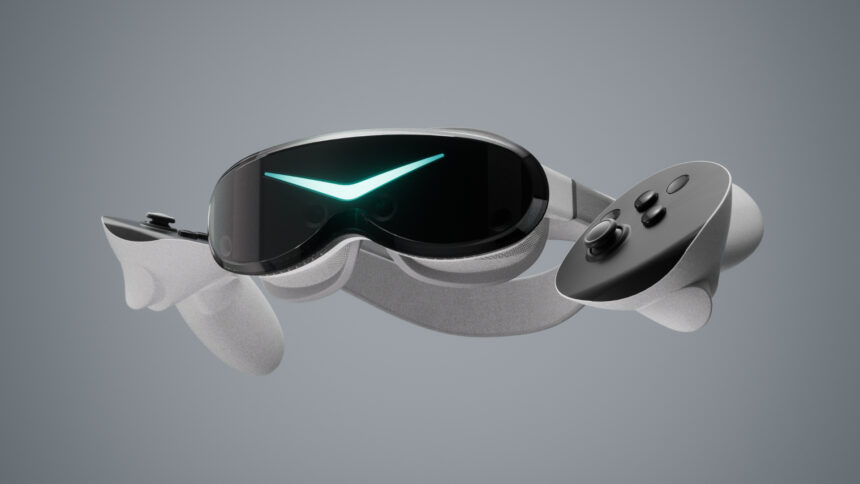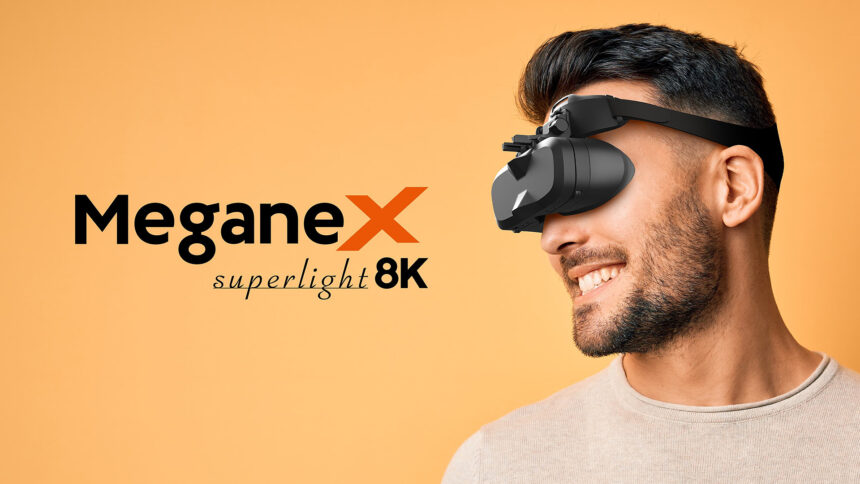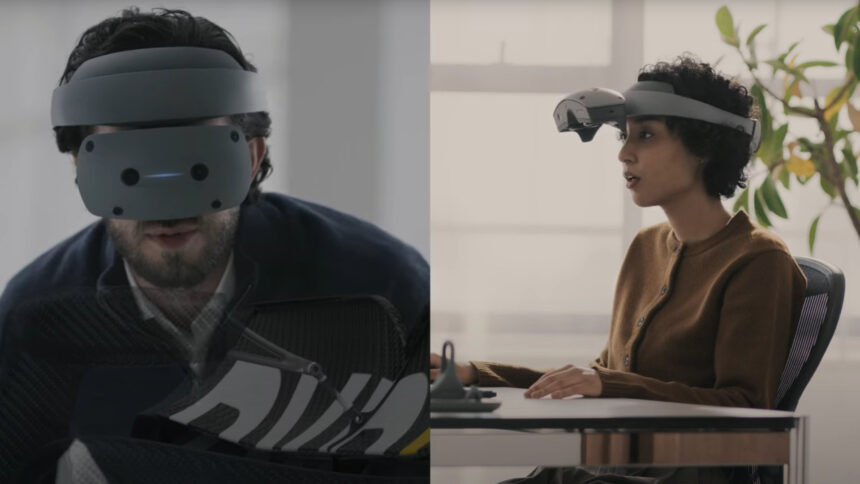Upcoming VR headsets 2025: What devices to expect?

What VR headsets can we expect to see this year? And what surprises might be in store for 2025? An overview.
2025 is likely to be a quieter year for VR hardware. Samsung and Google's mixed reality headset, currently the only major device confirmed for this year, is likely to make the biggest splash. The arrival of Android XR will transform the Meta-Apple rivalry into a three-way contest, promising to captivate us for years to come.
In 2025, the trend will be toward premium headsets, as well as ultra-lightweight experimental devices with high-resolution OLED microdisplays, which will be out of reach for most consumers due to their high price.
Maybe there will be one or two surprises later this year, for example from Valve, while the next generation of Quest headsets are not expected until late next year.
Content
Confirmed VR headsets
Samsung & Google: "Project Moohan"
Project Moohan will be the first headset based on Google's spatial operating system, Android XR, and will be released in 2025.
The final product name, price, and the exact release date are not yet known.
Specifications are incomplete and will be revealed later this year. What is confirmed is that the device will be based on Qualcomm's premium Snapdragon XR2+ Gen 2 chipset. Its CPU and GPU clocks are 20 percent and 15 percent higher, respectively, than the Snapdragon chipset in the Meta Quest 3 and 3S. It also supports up to 4.3K resolution per eye instead of 3K. No word yet on what type of display will be used. Samsung is using pancake lenses for the optics.
Projet Moohan (Korean for "Infinity") will offer color passthrough and, like Apple Vision Pro, will be designed for mixed reality, but will also support fully immersive apps. Other common features include the integration of eye tracking for UI navigation, foveated rendering, and automatic IPD adjustment.
In terms of comfort, Samsung, like Apple, has opted for a wired external battery to make the headset as light as possible. Unlike the Vision Pro, Samsung uses a rigid headband design with a forehead rest and adjustment wheel, very similar to the Meta Quest Pro.
It will be possible to control the mixed reality headset via eye and hand tracking, VR controllers, and Bluetooth accessories such as a keyboard and mouse. It is unclear whether the VR controllers (which were not yet shown by Samsung) will be included or sold separately.
The device will support most Android apps, as well as native versions of Google apps like Maps, Photos, and YouTube. The first immersive games have also been announced. A major focus is the integration of Google's AI assistant Gemini, which could set the product apart from the competition.
Although the price is not yet known, the device is expected to cost more than $1,000 and therefore will not compete directly with current Quest headsets.
Unconfirmed VR headsets
Apple Vision Pro (M5 revision) and a more affordable “Apple Vision”
Supply chain analyst Ming-Chi Kuo, known for his (relatively reliable) predictions about upcoming Apple products, reported last September that Apple is working on updating the Vision Pro with an M5 chip, with mass production to begin in the second half of 2025. Apart from the chipset, not much will change in terms of hardware and design, according to Kuo. This suggests that it will be a revision rather than an Apple Vision Pro 2. The original Apple Vision Pro was released on February 2, 2024 with an M2 chipset, which was already outdated at the time of the headset's launch.
According to a report by The Information, work on a full-fledged successor has been put on hold because Apple wants to focus on developing a cheaper version of the headset. According to the website, its launch is planned for the end of 2025. There are various, sometimes contradictory, reports about how Apple plans to reduce manufacturing costs and how much the cheaper device will cost.
With the M5 chip not expected until the end of the year, and Apple reportedly having trouble lowering the cost of the Vision Pro, it is questionable whether we can expect a new Vision product this year.
Horizon OS headsets from Asus and Lenovo
Meta announced in April 2024 that it would license Horizon OS (the operating system of the Meta Quest) to select hardware partners to develop specialized VR headsets.
Meta named two partners at the time: Asus and Lenovo. While Lenovo is working on a mixed reality device for productivity, learning and entertainment, Asus is focusing on a more gaming-focused headset under the ROG (Republic of Gamers) brand.
Nothing official has been heard about these projects since Meta's announcement. However, VR enthusiast Luna claims to have learned the first details about the upcoming Asus headset.
Luna wrote that the headset is being developed under the codename Tarius, with Asus planning to integrate eye and face tracking. The displays will be QD-LCDs with local dimming (like the Meta Quest Pro) or OLED microdisplays (like the Apple Vision Pro).
If the rumors are true, the Asus headset could be the first Horizon OS device since Meta Quest Pro to offer eye and face tracking. The price of the Asus headset is likely to be significantly higher than that of the Meta Quest 3, especially if OLED microdisplays are used.
There is currently no indication of when Meta's partner headsets will be released. For Meta, 2025 would be favorable, as it could counter Project Moohan with premium headsets based on Horizon OS. If the devices arrive in 2026 or 2027, they will likely use next-generation Snapdragon chipsets.
Valve Index 2 (“Deckard”)
The original Valve Index will be six years old this summer. Although there have been rumors of a successor codenamed Deckard for many years, we are still waiting for an announcement or concrete leaks beyond hints in the SteamVR code.
In late 2024, VR enthusiast Brad Lynch once again fueled the rumor mill. His team of dataminers found references and 3D models of new VR controllers codenamed Roy in the SteamVR code, and Lynch himself reported, citing his sources, that the controllers are currently being tooled for mass production.
Deckard and Roy: The codenames are references to the protagonist and antagonist in the sci-fi film Blade Runner, and it makes sense that the controller and headset would be released at the same time.
At this point, we can only speculate about the features of the headsets. Since new VR controllers have more features of a classic gamepad than expected, Deckard could be a "Steam Deck for your face," allowing you to play your Steam library on a virtual big screen. PC VR games could be streamed wirelessly to the headset or run standalone on the device thanks to an integrated chipset.
Other VR contenders of 2025:
A standalone premium headset from HTC?
When the Snapdragon XR2+ Gen was unveiled in early 2024, HTC was said to be developing a headset based on the premium chipset. In September, the company instead surprised everyone with the HTC Vive Focus Vision, which uses an outdated Snapdragon XR2 Gen 1.
Is a premium headset still in the pipeline, or has HTC abandoned the project after Google took over parts of the HTC Vive team? 2025 should bring clarity.
Immersed Visor
Immersed Visor is a lightweight productivity headset for the VR app of the same name. The device uses the XR2+ Gen 2, 4K OLED microdisplays, RGB passthrough, eye and hand tracking, and an external battery.
A failed press demonstration in the summer of 2024 cast doubt on the viability of the project, and although the headset is available for pre-order, it is still unclear if, when, and in what form the headset will be released.
Pimax Dream Air
The tethered PC VR headset was announced at the end of 2024 and is expected to start shipping in May 2025 if Pimax can meet the deadline.
It features 4K OLED microdisplays, eye tracking, integrated room tracking and VR controllers, and is said to weigh less than 200 grams.
For more information, check out our article on the Pimax Dream Air.

Concept rendering of the Pimax Dream Air. | Image: Pimax
Play for Dream
The standalone headset from China, which is heavily inspired by the Apple Vision Pro in both software and hardware, turned heads at CES 2025.
The device uses the premium Snapdragon XR2+ Gen chipset, pancake lenses, 4K OLED microdisplays, passthrough and eye tracking, and comes with its own VR controllers. The operating system is a proprietary Android fork.
Backers of the Kickstarter campaign should be receiving their headset soon, and we are eager to hear when regular sales will begin and what the price will be.
Shiftall Meganex 8K Superlight
Former Panasonic spin-off Shiftall opened pre-orders for its new super-lightweight PC VR headset late last year.
The Meganex Superlight 8K has pancake lenses and 4K micro OLED displays, and features a flip-up mechanism to fold up the visor, which weighs 185 grams.

Lightweight and high-resolution: the Meganex Superlight 8K. | Image: Shiftall
The SteamVR headset is priced at $1,900 and does not include base stations, controllers, or an audio solution. It is currently scheduled to begin shipping in March 2025.
Sony SRH-S1 and XYN
The SRH-S1 mixed reality headset, first shown at CES 2024, was developed in collaboration with Siemens and is intended for industrial use. It will be available to interested companies from February 2025 at a price of $4,750.
The device features a Snapdragon XR2+ Gen 2, 4K OLED microdisplays, a flip-up visor, and two unusual VR controllers in the form of a stylus and a ring.

Sony's SRH-S1. | Picture: Sony
At CES 2025, Sony teased another headset called XYN, which looks a lot like the SRH-S1, but is optimized for different use cases: capturing and creating spatial content. It is currently unclear when this headset will be released and how much it will cost.
Are you interested in VR and AR? Join the conversation on Facebook, Bluesky or X or share your opinion in the comments below.
For feedback, topic suggestions, or other ideas, please email us at hello@mixed-news.com.
Note: Links to online stores in articles can be so-called affiliate links. If you buy through this link, MIXED receives a commission from the provider. For you the price does not change.